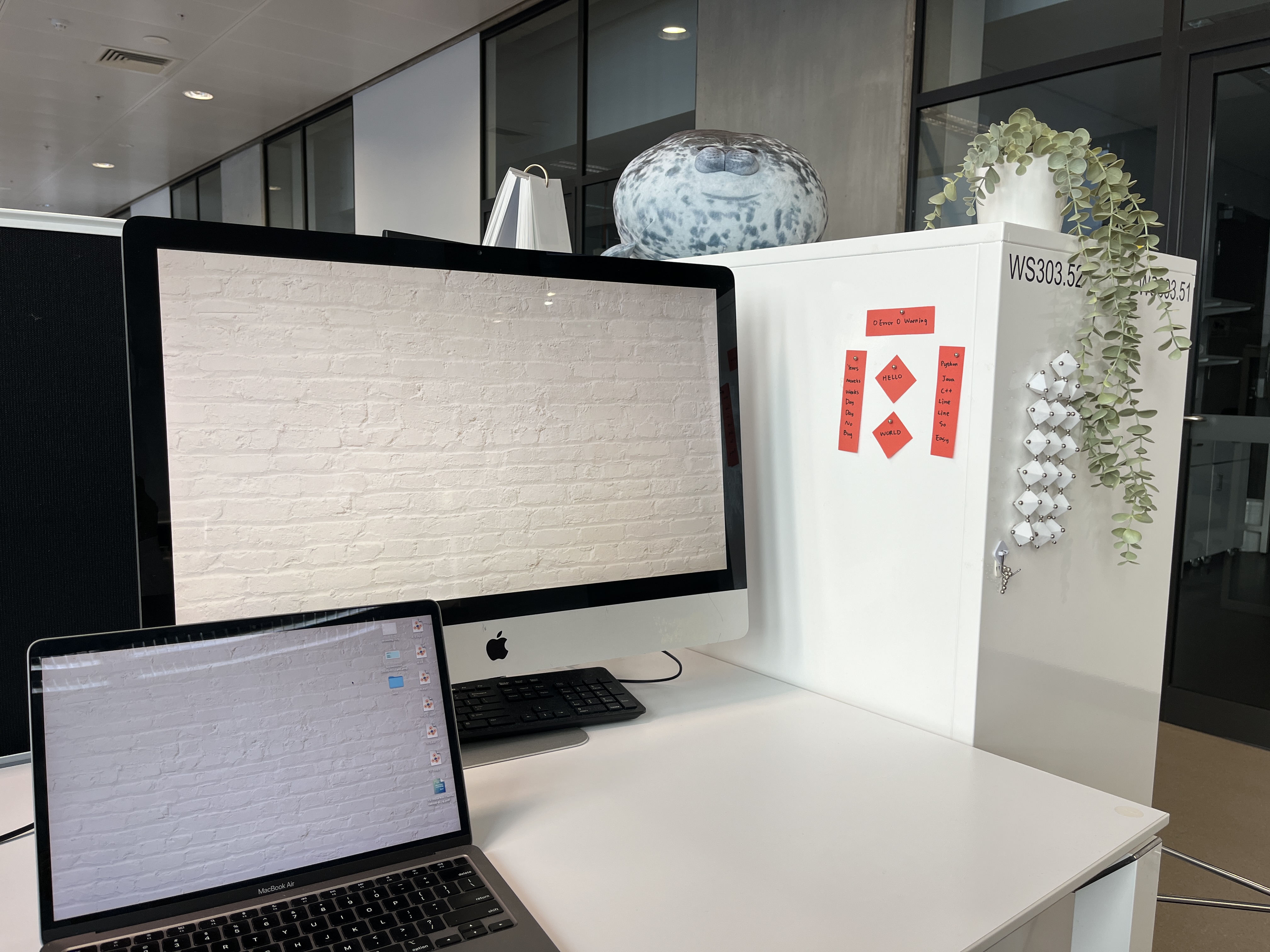What was on my PhD desk?
This month, I officially wrapped up my PhD journey! Last week, I packed up my desk and handed it back to the school. I wasn’t expecting it to feel so sentimental—but that little corner had been my space for years. It held not just my screens and notebooks, but the quiet progress of countless research days.
So, I thought I’d mark the occasion with a behind-the-scenes post: what was on my PhD desk.
My workspace
Desk setup has always mattered to me—it shapes how productive and focused I feel. I was lucky to have a spot in one of the newest buildings on campus: floor-to-ceiling windows, beautiful natural light, and a generous desk with enough space to spread out.
Although I sometimes worked in libraries or common study areas, my desk was my home base. My research was mostly computational, so my work lived on screens. A lot of it looked like… code. Lines and lines of code.
I also happen to love productivity and desk setup content on YouTube—those “What’s On My Desk” videos are my guilty pleasure. Over time, I refined my own space, inspired by minimalism, but… let’s be honest. Some days it was more ‘creative chaos’ than curated workspace.
Still, near the final stretch of my PhD, I did manage to create a version I was happy with. Here’s what it looked like—on a clean day, of course:

Screens, screens, screens
A big part of my desk setup was, unsurprisingly, screen real estate. My final screen setup looked like this:
- A MacBook Air (my main machine)
- An old iMac (used as a second screen)
- Occasionally, my iPad joined the lineup as a third screen
For the first couple of years, I used just the MacBook. I liked the mobility—especially since I was still figuring out the office thermostat (pro tip: wearing too many winter layers indoors makes you sleepy).
Then, midway through my third year, I stumbled on a treasure: an abandoned 2010 iMac sitting in the tearoom with a note that said “Good for parts.” It couldn’t run any modern apps, but it made for an excellent second monitor. Suddenly, coding became a lot easier.
I did experiment with three screens—but for me, consistency mattered more than quantity. Switching setups always took a bit of adjustment.
Desk decorations
Of course, a workspace isn’t just functional—it’s also personal.
Everyone in our office decorated their desks in their own way—plushies, LEGO builds, Pop Mart figurines, tiny gacha machine toys. It made the room feel warm and lived-in.
Here were my favourites:
- A Spring Festival couplet from our 2023 Lunar New Year event, organised by our student society, PGSOC. I wrote a little wish on mine—for smooth simulations and bug-free code.
- A magnetic 3D-printed perovskite model I designed and made myself. It started as a fun side project and later became part of our outreach demos at a science festival. After the event, it lived on the magnetic cabinet next to my desk—where I (or my officemates) could rearrange it into different crystal structures. Functional and fun!
How not to fall asleep at your desk
No matter how well the desk was set up, some days were just hard. We’ve all had those moments—staring at the screen, eyes glazing over. Here’s what helped me stay awake and focused:
- Temperature matters. For months, I couldn’t figure out why I was always sleepy. Turns out: I was simply overdressed. Fewer layers indoors, a warm coat for outside—problem solved.
-
Hydration. I bought a giant Stanley thermos (yes, that one—the one that looks like a liquid nitrogen tank). My goal was to drink the whole thing once a day. I didn’t make it on most days, but the regular bathroom breaks at least kept me moving.
- Music. I never got into bulky over-ear headphones, so I used my AirPods. My go-to playlists were Peaceful Piano and lo-fi beats on spotify. I also loved the focus music on Headspace—it has built-in timers and gentle openings/endings, which really helped during thesis writing. (I only used it occasionally though—it’s a paid feature.)
- Movement. When all else failed, I stood up and wandered into the tearoom to chat with a friend. Sometimes, that’s all you need to reset.
Signing off
Packing up my desk marked the end of my PhD era. That small space quietly held so much—late nights, tough problems, tiny breakthroughs, and the daily rituals that kept me going.
But more than anything, what I’ll remember is the kindness. I’m deeply grateful to the administrative and academic staff at our school—Alan, Jane, and Qing especially—for always looking out for me with such warmth and support. I also feel incredibly lucky to have been part of our student society, PGSOC, where I served as a peer mentoring coordinator. That community became a meaningful part of my experience.
So, here’s to the desk that saw it all—and to whatever comes next.
Enjoy Reading This Article?
Here are some more articles you might like to read next: